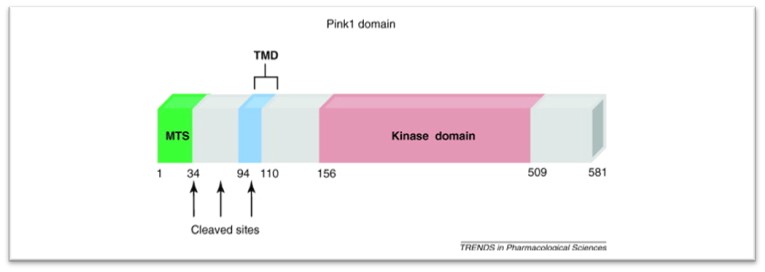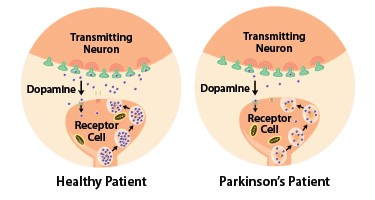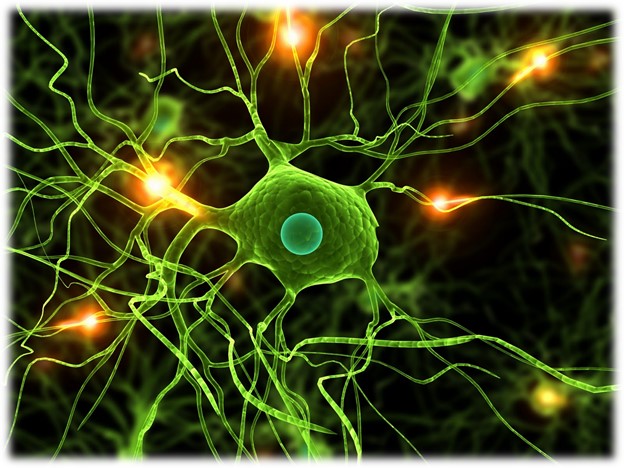Parkinson's disease is a progressive neurological condition in which movement is affected. Manifestations start step by step, in some cases beginning with a barely noticeable tremor in just a single hand. These tremors are common, however, the disease additionally causes firmness or slowing of development. In the initial phases of Parkinson's disease, one’s face may show practically zero expression. The arms may not swing when one walks. The speech may turn out to be delicate or slurred. The symptoms of this disease deteriorate as the condition advances over time.
PINK1
The PINK1 gene is responsible for encoding PTEN-induced kinase 1 (PINK1), which is a mitochondrial serine/threonine-protein kinase. It plays a role in protection of the cells from stress-induced mitochondrial dysfunction. Mutations in this particular gene lead to the early onset of autosomal recessive Parkinson’s disease.

Its Role in Parkinson’s Disease
The involvement of PINK1 is with mitochondrial quality control by recognizing damaged mitochondria and focusing on specific mitochondria for degradation. Healthy mitochondria generally maintain a membrane potential that can be utilized to import PINK1 into the inner membrane, where it is further cleaved by PARL (Presenilins-associated rhomboid-like protein) and therefore cleared from the outer membrane. Mitochondria that have been severely damaged lack the sufficient about of membrane potential required to import PINK1, which results in its accumulation on the outer membrane. PINK1, at that point starts recruiting parkin to focus on the damaged mitochondria for degradation via autophagy. Due to the presence of PINK1 all through the cytoplasm, it is suggested that PINK1 plays the role of a "scout" to probe for the damaged mitochondria.

PINK1 may likewise control mitochondria quality through mitochondrial fission. Mitochondrial fission generates a number of daughter mitochondria, which often tend to have uneven distribution in membrane potential. Mitochondria with a healthy and sound membrane potential are more likely to go through fusion than the ones having a low membrane potential. Without PINK1, parkin is not able to efficiently localize to the damaged mitochondria; on the other hand, an over-expression of PINK1 results in the localization of parkin even on the healthy mitochondria.

The characterization of Parkinson’s disease is often done by the degeneration of dopaminergic neurons and related to the accumulation of Lewy bodies and improperly folded proteins. Mutations in the PINK1 protein have been appeared to prompt the development of such improperly folded proteins in the mitochondria of both flies and human cells. Mutations, specifically in the serine/threonine kinase domain have been found in various Parkinson's patients where PINK1 is unable to ensure protection against apoptosis and stress-induced mitochondrial dysfunction.
Treatment of Parkinson’s Disease
Despite the fact that there is no proper cure for Parkinson's disease, medications, careful treatment, and other therapies often relieve certain symptoms.
• The primary treatment for Parkinson's is levodopa, also known as L-dopa. Nerve cells utilize levodopa to make dopamine replenish the brain’s diminishing supply. Normally, individuals take levodopa alongside another medication called carbidopa. Carbidopa forestalls or diminishes a portion of the side-effects of levodopa treatment like vomiting, nausea, restlessness and a drop in blood pressure, therefore reducing the measure of levodopa expected to improve symptoms.
• Dopamine agonists (mimics the function of dopamine in the brain), COMT inhibitors (helps in the breakdown of dopamine), Amantadine (antiviral drug) and anticholinergic drugs are some of the medications used to ease the symptoms of Parkinson’s.
• Deep Brain Stimulation or DBS is used for patients who do not respond well to medications. DBS is a type of surgery in which electrodes are implanted surgically into part of the brain and interfaces them to a minute electrical device implanted in the chest. The electrodes and the device easily stimulate the brain painlessly in a way that helps in stopping a large number of the movement-related manifestations of Parkinson's, like slowness of movement, tremor, and inflexibility.

